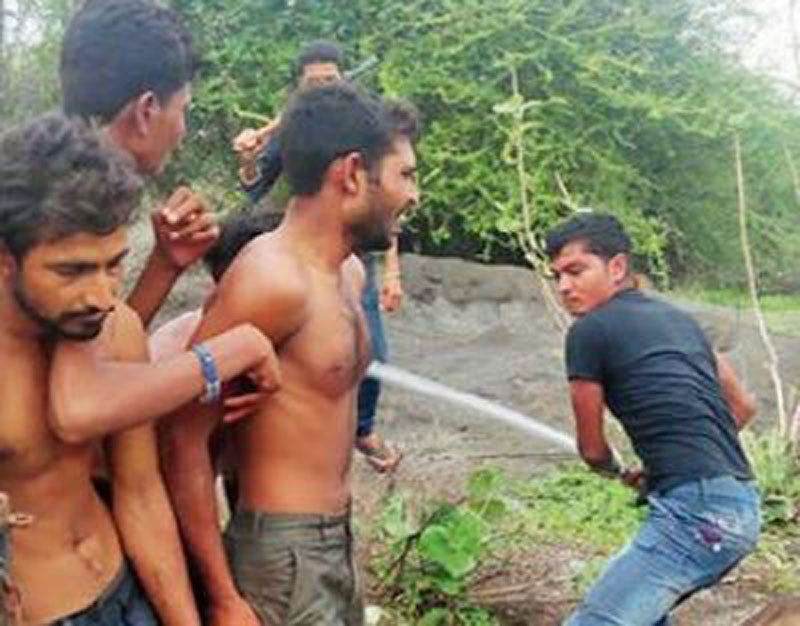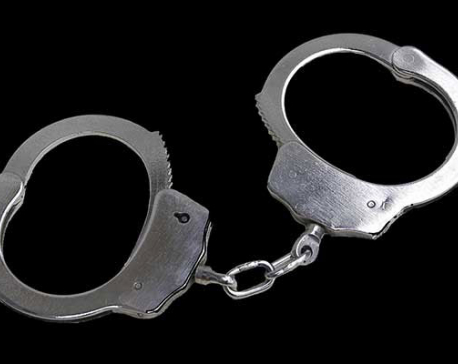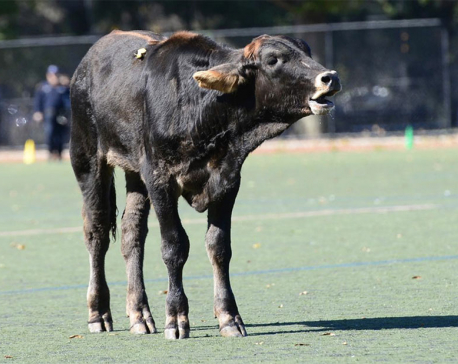
OR

More from Author
If Dalits allow rotting cow carcasses to pile up around the country, perhaps the stink will finally overwhelm it
Indian politics continues to amaze and appall. The surge in cow vigilantism—a uniquely Indian phenomenon that has lately begun to flourish under the Bharatiya Janata Party (BJP) government—is no exception.
Many orthodox Hindus, particularly in the northern Indian states that comprise the so-called Cow Belt, worship the cow as gau mata, the “mother of all,” which provides nourishment and sustenance through its milk—not its meat. Refusing to eat beef is common in these states.
But it is not always a personal choice. Several Indian states have passed laws outlawing cow slaughter, and some have prohibited the possession and consumption of beef altogether. Cow slaughter and beef consumption are fully legal in just five of India’s 29 states, mainly in the south and northeast.
In the past, cow-protection laws have been weakly enforced, if at all; the police have better things to do than to check people’s kitchens, after all. But since the victory of the Hindu-chauvinist BJP in the 2014 general election, a wave of religious triumphalism has swept India, bringing with it not just new cow-protection laws, but also vociferous demands for their strict enforcement. Gau Rakshak Samitis, or “cow protection societies,” have been revived, and their members sometimes take it upon themselves to ensure that cows are not slaughtered or eaten.
Making matters worse, the cause of cow protection has now been linked to another persistent and destructive custom in Indian society: violence against Muslims and Dalits (formerly called “untouchables”). Indeed, the Cow Belt, where cow vigilantism is most rampant, is also a hub of atrocities against Dalits, 63 percent of which occur in just four states: Uttar Pradesh, Bihar, Madhya Pradesh, and Rajasthan. It is no coincidence that these are also the states where the BJP fared best in 2014.
The link between cows and Dalits is well known. Cows may be considered holy, but they are not immortal, and when they die (ideally of natural causes), someone must dispose of their carcasses. For centuries, that job has fallen to Dalits, who collect the carcasses, skin them and sell their hides to tanners and leather-makers, deliver the meat to Muslim butchers (where it is legal), and bury or cremate what remains. It is a livelihood for a group with few economic opportunities—one that benefits the many Hindus who would not want to perform such an unpleasant task.
But several recent incidents have shaken the foundations of this arrangement. In the state of Gujarat, four Dalit youths caught skinning a cow were stripped, tied, and beaten with iron rods by cow vigilantes who accused them of killing the animal (they had not). In BJP-ruled Madhya Pradesh, two Dalit women were assaulted for supposedly carrying illegal cow meat (it was legal buffalo meat). In Punjab, two young Dalits were beaten and urinated upon for the same “crime.” A 16-year-old Kashmiri Muslim boy was murdered for having hitched a ride on a truck that was transporting cattle.
Such incidents have heightened the sense of vulnerability felt by many who do not necessarily share the vigilantes’ reverence for cows. They have also led to serious economic challenges for some groups.
Farmers who raise their cows with care and respect may not be able to afford to continue caring for those that are too old to produce milk. In the past, they would address this by quietly selling the aged cows either to local butchers or to those who would transport them to states where cow slaughter is legal. But, because that would be far too dangerous in the current political climate, many farmers are being driven into debt caring for old cows, while the cow population in India becomes increasingly unsustainable.
Moreover, Dalits are increasingly refusing to dispose of cow carcasses. After the Gujarat incident, one group of Dalits in the state declared outright their intention to suspend their traditional duties. “If the cow is your mother,” they challenged upper-caste Hindus, “why don’t you bury her?”
Where has the central government been as all of this has been happening? Initially, it did not condemn cow vigilantism. India’s social justice minister, whose principal responsibility is to promote the welfare of India’s Dalits, expressed regret not for the vigilantes’ violent actions, but for the fact that they were spurred by ill-founded rumors.
This view was reflected in the government’s response to an attack in Uttar Pradesh, where a mob lynched a Muslim and beat his son nearly to death, simply because they suspected that he had killed a cow. Rather than leaping to the victims’ defense, the authorities launched a forensic investigation into whether the meat in his refrigerator was beef (it was not). The implication was clear: violence is unjustifiable only if the victim has not actually killed or eaten a cow.
But on August 6, Prime Minister Narendra Modi finally broke his silence on the issue, warning people to beware of the fake Gau Rakshaks (protectors of cows) who are trying to create social conflict. “All states should take stern action against these people,” he declared. Modi’s words surely came as a relief to those who doubted the government’s willingness to stand up against its own sympathizers.
Yet cow vigilantism is far from extinguished in India. If the Dalits allow rotting cow carcasses to pile up around the country, perhaps the stink will finally overwhelm it. But, with Hindu chauvinism going strong, many Indians will still have plenty of reasons to hold their noses.
The author is a former UN under-secretary-general and former Indian Minister of State for Human Resource Development
You May Like This

Three held for ‘butchering cows’
MAKWANPUR, Jan 29: Police have arrested three people for their involvement in butchering cows and made them public on Tuesday. Read More...

Ward chairman rakes in moolah from cow farming
PARBAT, Nov 6: Cow farming is working wonders for a local representative here. Subash Chandra Paudel, chairperson to Ward no... Read More...

New York police round up wandering cow in Brooklyn Park
NEW YORK, Oct 23: New York City police wrangled a cow on the loose in a Brooklyn Park on Tuesday after... Read More...





Just In
- MoHP cautions docs working in govt hospitals not to work in private ones
- Over 400,000 tourists visited Mustang by road last year
- 19 hydropower projects to be showcased at investment summit
- Global oil and gold prices surge as Israel retaliates against Iran
- Sajha Yatayat cancels CEO appointment process for lack of candidates
- Govt padlocks Nepal Scouts’ property illegally occupied by NC lawmaker Deepak Khadka
- FWEAN meets with President Paudel to solicit support for women entrepreneurship
- Koshi provincial assembly passes resolution motion calling for special session by majority votes







_20220508065243.jpg)






Leave A Comment